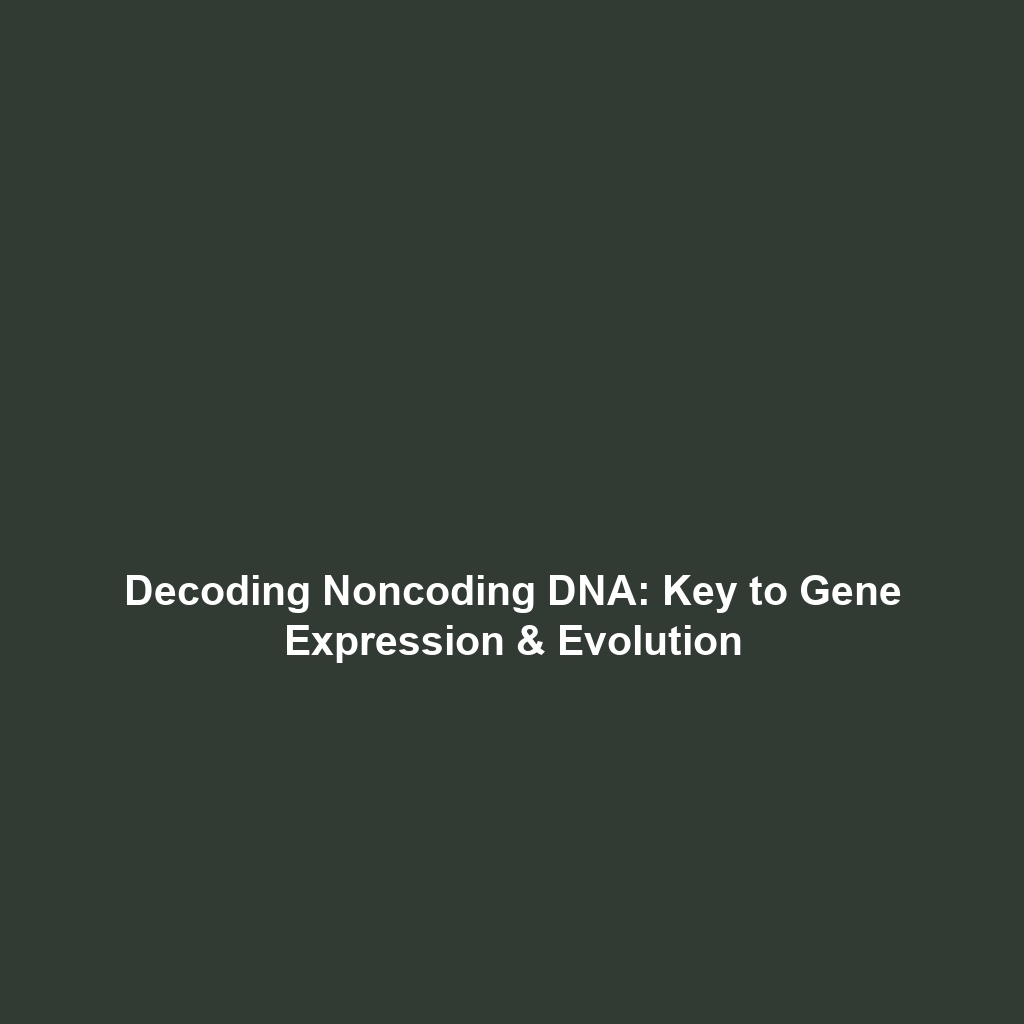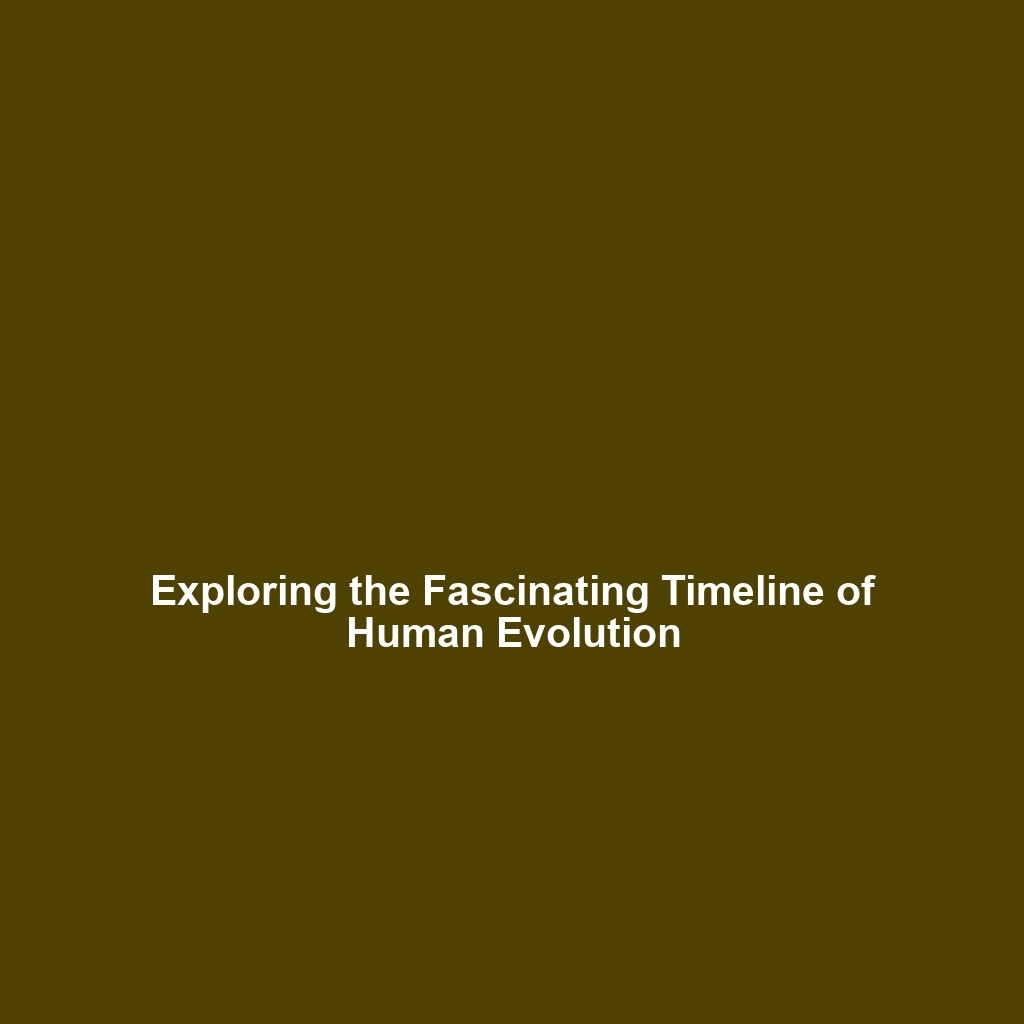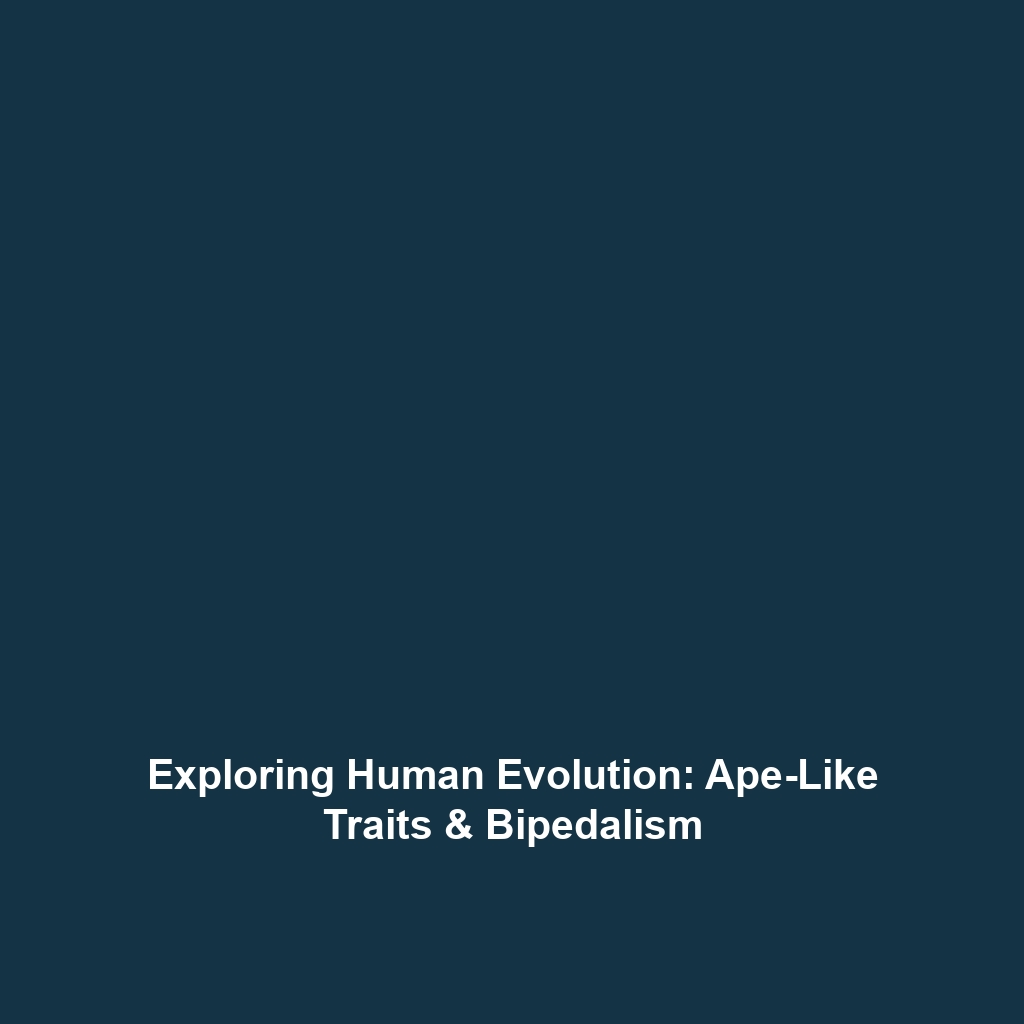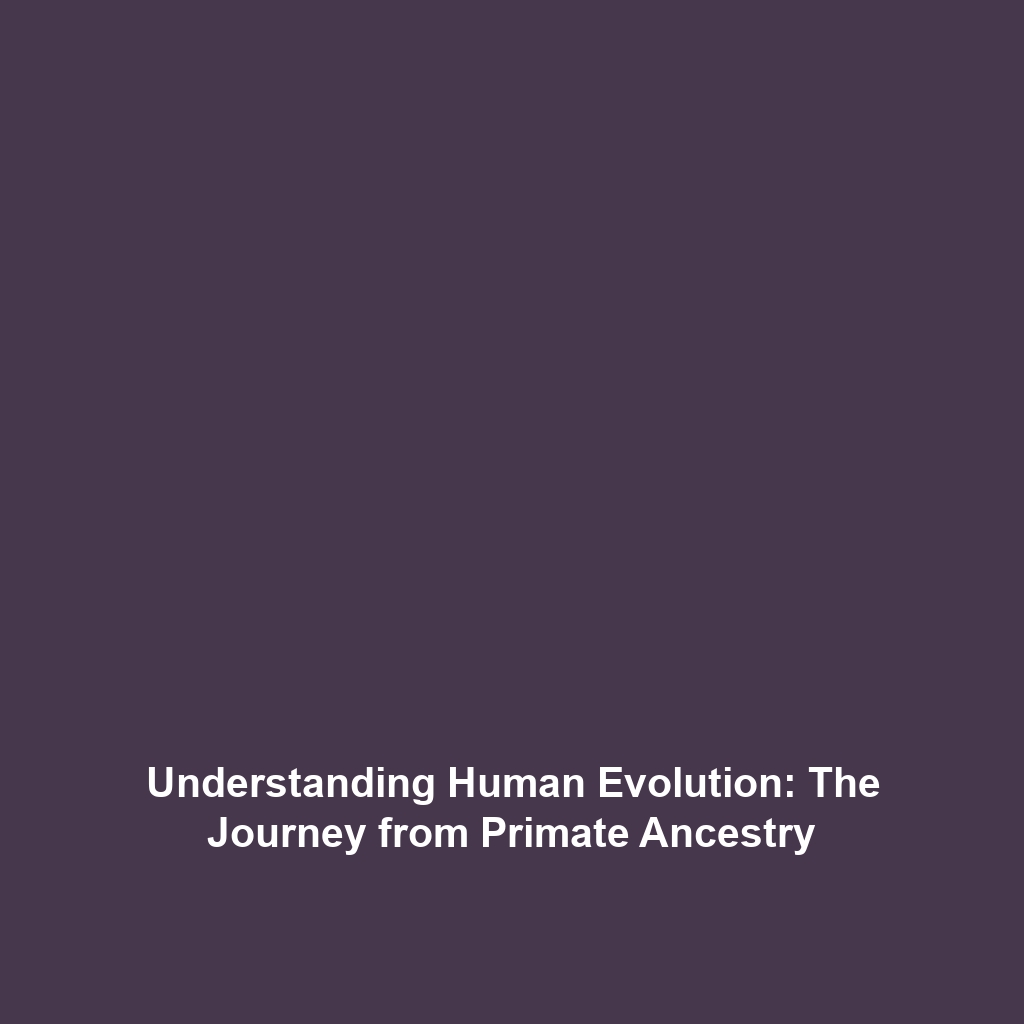The Role of Noncoding DNA in Regulating Gene Expression, Chromosomal Structure, and Evolutionary Processes
Introduction
The significance of noncoding DNA has garnered increasing attention in recent research, particularly within the context of the Human Genome Project. For decades, scientists considered the majority of our genetic material to be junk DNA; however, emerging studies demonstrate the crucial role that noncoding regions play in regulating gene expression, maintaining chromosomal structure, and influencing evolutionary processes. This article explores how these noncoding elements contribute to the complexities of genomic regulation and evolutionary development, establishing a connection to the extensive findings from the Human Genome Project.
Key Concepts
Understanding Noncoding DNA
Noncoding DNA refers to the segments of DNA that do not encode proteins but play critical regulatory and structural roles in the genome. The major functions include:
- Gene Regulation: Noncoding DNA houses regulatory elements such as enhancers and silencers that control when and where genes are expressed.
- Chromosomal Structure Maintenance: Certain noncoding regions contribute to the structural organization of chromosomes, ensuring proper function during cell division.
- Evolutionary Processes: Noncoding sequences can be subject to evolutionary pressures, leading to diversification and adaptation over time.
Applications and Real-World Uses
The implications of noncoding DNA extend beyond theoretical discussions. Here are some notable applications:
- Gene Therapy: Understanding noncoding regulatory mechanisms allows for advancements in gene therapy applications, which can target specific gene expressions related to diseases.
- Personalized Medicine: Insights from the Human Genome Project reveal how variations in noncoding DNA can influence individual responses to treatments, paving the way for personalized medical approaches.
- Genetic Research: Noncoding regions are increasingly being studied in the context of complex diseases, lending insight into disease mechanisms that were previously misunderstood.
Current Challenges
Despite its importance, studying noncoding DNA presents certain challenges:
- Understanding Function: The functional roles of many noncoding regions are still not well defined, leading to difficulties in interpreting their biological significance.
- Technical Limitations: Advanced techniques are required to analyze noncoding regions effectively, and not all laboratories have access to the necessary resources.
- Data Complexity: The vast amount of data generated from the Human Genome Project can be overwhelming, and integrating this data into actionable insights poses significant challenges.
Future Research and Innovations
As research develops, the future of studying noncoding DNA looks promising. Upcoming innovations include:
- CRISPR Technology: The application of CRISPR for editing noncoding regions may allow researchers to explore their functions actively.
- Single-Cell Genomics: Technologies that facilitate analysis at the single-cell level will deepen our understanding of how noncoding DNA affects gene expression in various cell types.
- Long-Read Sequencing Technologies: These advancements promise a more comprehensive view of noncoding DNA, potentially uncovering new regulatory elements affecting gene expression.
Conclusion
In conclusion, noncoding DNA plays an essential role in regulating gene expression, maintaining chromosomal structure, and facilitating evolutionary processes. Its significance becomes more apparent in light of findings from the Human Genome Project. Future exploration of noncoding regions may lead to breakthroughs in personalized medicine, gene therapy, and genetic research. To stay informed about the latest developments, consider following advancements in genomics research.
For more insights related to genetics and the Human Genome Project, visit our related topics page to explore further.







